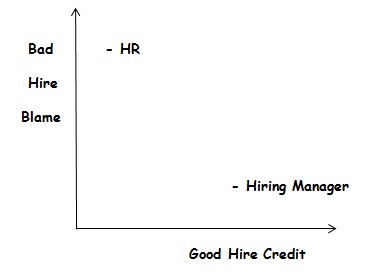Recently the crew at FOT has been having some conversations about what’s new in HR. It use to be all you had to do was show up at a HR conference and listen to someone from Zappos, Google, Sodexo, etc. to find out what were the latest and greatest happenings going on in HR! But no more – it seems like HR is in a dead period of new ideas! I blame the recession – why wouldn’t I – the ‘Great Recession’ gets blamed for everything – might as well take some HR heat! Nobody at FOT could really come up with any ideas that were new. But thankfully the good HR folks at Google came through one more idea, but I don’t how new it is…
From Quartz – Google admits those infamous brainteasers were completely useless for hiring:
“Google has admitted that the headscratching questions it once used to quiz job applicants (How many piano tuners are there in the entire world? Why are manhole covers round?) were utterly useless as a predictor of who will be a good employee.
“We found that brainteasers are a complete waste of time,” Laszlo Bock, senior vice president of people operations at Google, told the New York Times. “They don’t predict anything. They serve primarily to make the interviewer feel smart…
Bock says Google now relies on more quotidian means of interviewing prospective employees, such as standardizing interviews so that candidates can be assessed consistently, and “behavioral interviewing,” such as asking people to describe a time they solved a difficult problem. It’s also giving much less weight to college grade point averages and SAT scores.”
Yes, you are reading that correctly – Google’s ‘new’ HR idea is to go retro! Back to behavioral interviewing and standardized interview decks – hello 90’s! Isn’t that wonderful – I can’t believe Google didn’t have someone at SHRM 13 leading a session like “Google’s Strategic HR Innovations – Just Interview Them Stupid!” HR ladies would have packed the house to find out how they to could jump into the 90’s. Also, let’s just come right out corporately and validate to all those kids in college – you’re just wasting your time and spending your parents retirement. I’ve really never been so excited for our industry!
So, I would like to take it upon myself and the entire HR community to let the world know – HR is out of ideas!
Here’s were we/HR stand:
– Still need to hire people
– Still need to train our employees
– Still need to provide benefits and pay administration
– Still planning the company picnic, and/or ‘holiday party
Long live HR.

